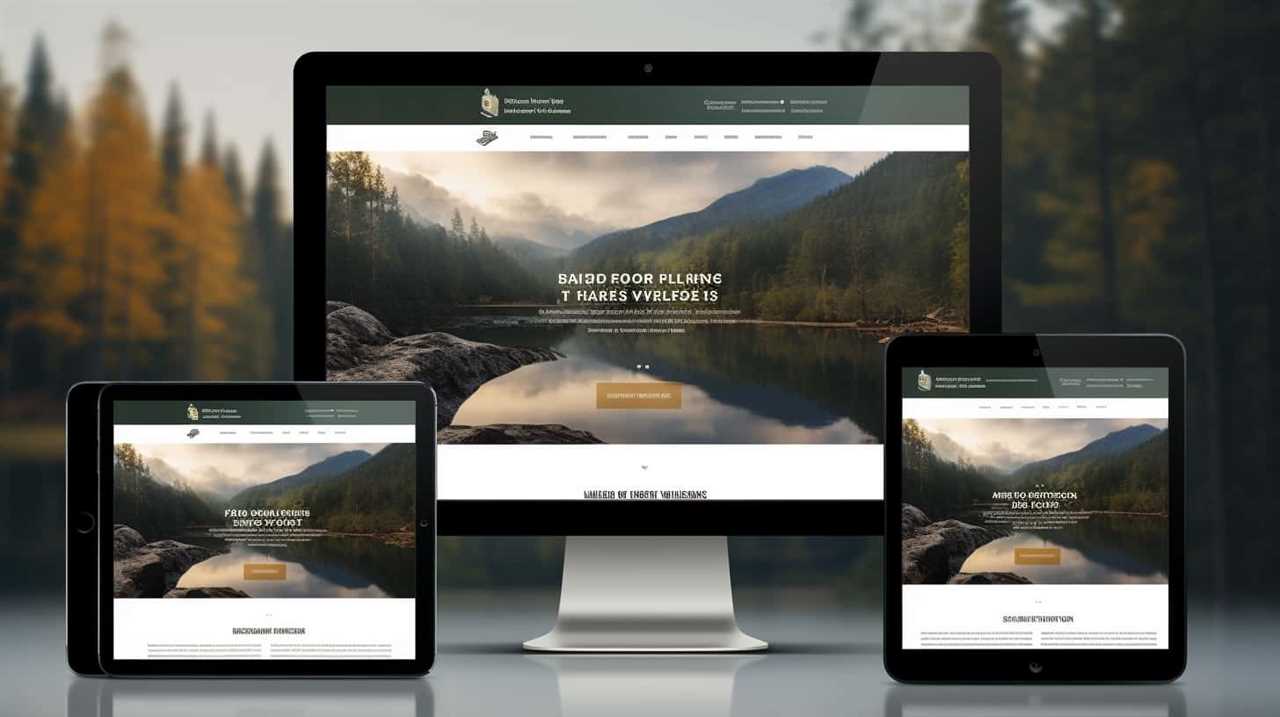Keyword Research
Market Research Analyst: Which Keywords Should a Market Research Analyst Use to Offer Competitive Analysis Services

Are you ready to unlock the power of keywords and enhance your competitive analysis offerings?
Well, look no further! In this article, we’ll dive deep into the world of market research analysis and explore which keywords can help you stay ahead of the game.
From understanding your target audience to utilizing powerful tools, we’ve got you covered.
So, buckle up and get ready to revolutionize your marketing strategy with the perfect keywords.

Let’s break free from the competition together!
Key Takeaways
- Keywords play a crucial role in offering competitive analysis services.
- Understanding the target audience ensures effective competitive analysis.
- Identifying high-volume and high-intent keywords is essential for competitive analysis.
- Competitor analysis and industry trends are key strategies for keyword research.
Importance of Keywords for Market Research Analysts
Keywords play a crucial role in the work of market research analysts, allowing us to effectively offer competitive analysis services. Understanding keyword competition and employing effective keyword analysis techniques are essential for conducting comprehensive and insightful research.
Keyword competition refers to the level of competition for specific keywords in search engine rankings. By analyzing keyword competition, we can identify the most relevant and valuable keywords to target in our research. This enables us to provide accurate and up-to-date competitive analysis to our clients, giving them a competitive edge in the market.
Through keyword analysis techniques, we can uncover valuable insights into consumer behavior, market trends, and competitor strategies. By understanding the intricacies of keyword competition and employing effective analysis techniques, we can deliver meaningful and actionable competitive analysis services to our clients, empowering them to make informed business decisions.

Moving forward, let’s explore the next section on understanding the target audience for competitive analysis services.
Understanding the Target Audience for Competitive Analysis Services
As market research analysts, we strive to understand the target audience for our competitive analysis services by utilizing effective techniques and focusing on their specific needs and preferences.
In order to gain a comprehensive understanding of our target audience, we employ target audience analysis, which involves conducting research and gathering data on the characteristics, behaviors, and preferences of our potential clients. This helps us identify their specific needs and tailor our competitive analysis services accordingly.
Additionally, we implement competitor analysis techniques to gain insights into the strategies, strengths, and weaknesses of our competitors, enabling us to better position our services and differentiate ourselves in the market.

Identifying High-Volume and High-Intent Keywords for Competitive Analysis
When it comes to identifying high-volume and high-intent keywords for competitive analysis, keyword search strategies and competitive analysis techniques play a crucial role.
By utilizing effective keyword research tools and analyzing competitors’ online presence, we can gain insights into the keywords that are driving traffic and conversions.
This enables us to optimize our own content and advertising strategies to better target our audience and stay ahead of the competition.
Keyword Search Strategies
To effectively identify high-volume and high-intent keywords for competitive analysis, we must employ a variety of keyword search strategies.

Here are three key strategies to consider:
- Competitor Analysis:
Conducting research on your competitors’ keywords can provide valuable insights into their strategies and help you uncover opportunities. Analyze the keywords they’re targeting and identify any gaps or areas where you can differentiate yourself. - Industry Trends:
Stay up-to-date with the latest trends in your industry to identify keywords that are gaining momentum. Use tools like Google Trends or social media listening to identify popular topics and keywords that are relevant to your target audience. - Long-tail Keywords:
Long-tail keywords are longer and more specific keyword phrases that have lower search volumes but higher intent. These keywords can help you target a niche audience and increase your chances of conversion. Use keyword research tools to identify long-tail keywords that align with your offering.
Competitive Analysis Techniques
We utilize various techniques as market research analysts to identify high-volume and high-intent keywords for competitive analysis.
These techniques involve the use of competitive analysis tools and competitor research techniques.
Competitive analysis tools help us gather data on our competitors’ keywords, search volume, and ranking positions. This information allows us to identify keywords that have a high search volume and indicate strong user intent.

Additionally, competitor research techniques involve analyzing our competitors’ websites, content, and online presence to uncover keywords they’re targeting and ranking for.
By understanding the keywords that our competitors are using successfully, we can develop a more effective keyword strategy for our own competitive analysis services.
These techniques enable us to stay ahead of the competition and provide valuable insights to our clients.
Utilizing Long-Tail Keywords for Niche Competitive Analysis Services
Our approach as market research analysts is to leverage long-tail keywords to provide niche competitive analysis services. By utilizing long-tail keywords, we can uncover valuable insights that may be overlooked by competitors.

Here are three ways we use long-tail keywords for competitive advantage:
- Targeting specific customer needs: Long-tail keywords allow us to understand the specific pain points and desires of niche customer segments. This enables us to tailor our competitive analysis to address these unique needs effectively.
- Identifying untapped opportunities: Long-tail keywords reveal niche markets and emerging trends that may not be apparent through broader keyword research. By focusing on these untapped opportunities, we can provide valuable insights to our clients and help them gain a competitive edge.
- Enhancing content strategy: Long-tail keywords provide valuable guidance for content creation and optimization. By incorporating these keywords into our clients’ content strategy, we can improve their visibility and attract highly targeted traffic.
Incorporating Local Keywords to Attract Clients in Specific Geographical Areas
By incorporating local keywords, we can effectively attract clients in specific geographical areas and further enhance our competitive analysis services. When targeting local businesses, it is crucial to understand the unique characteristics and needs of the local market. Conducting local market analysis allows us to gather valuable insights into the preferences, behaviors, and trends of the target audience in a specific region. This information can then be used to tailor our competitive analysis services to meet the specific demands of clients in that area. To illustrate the importance of incorporating local keywords, consider the following table:
| Geographical Area | Local Keywords | Potential Clients |
|---|---|---|
| New York City | NYC market | Local businesses |
| Los Angeles | LA analysis | Small enterprises |
| London | London research | Startups |
Keyword Research Tools for Market Research Analysts
When it comes to conducting competitive analysis as a market research analyst, the selection of keywords is crucial.
To optimize the process, market research analysts can utilize various keyword research tools available in the market.

These tools provide valuable insights into the best keywords to target, enabling analysts to stay ahead of the competition and offer comprehensive competitive analysis services.
Best Keyword Research Tools
After conducting extensive research, we found that one of the most effective keyword research tools for market research analysts is using Google Keyword Planner. This tool provides valuable insights into keyword search volume, competition, and trends.
Here are three reasons why Google Keyword Planner is highly recommended for market research analysts:
- Comprehensive keyword data: Google Keyword Planner offers a vast database of keywords, allowing analysts to explore various keyword options and identify the most relevant ones for their research.
- Accurate search volume estimates: The tool provides reliable estimates of monthly search volumes for specific keywords. This information helps analysts gauge the popularity and potential of different keywords.
- Competitive analysis: Google Keyword Planner also provides insights into the competition level for each keyword, enabling analysts to assess the difficulty of ranking for certain terms and choose the most profitable keywords.
By utilizing Google Keyword Planner, market research analysts can optimize their keyword research techniques and effectively find profitable keywords.

Now, let’s delve into the next section about optimizing competitive analysis.
Optimizing Competitive Analysis
To enhance competitive analysis, market research analysts should leverage advanced keyword research tools. These tools provide valuable insights into the keywords that competitors are using to optimize their online presence. By analyzing these keywords, analysts can identify gaps and opportunities in the market, allowing them to develop effective strategies for their clients.
One important technique for optimizing competitor analysis is incorporating local keywords. This involves identifying keywords that are specific to a particular geographic location and tailoring the analysis accordingly. By understanding the local market, analysts can provide more targeted insights and recommendations to their clients, helping them gain a competitive edge.
Importance of Keyword Selection
To further enhance competitive analysis, we continue by emphasizing the importance of keyword selection and utilizing keyword research tools as market research analysts. Effective keyword selection is crucial for obtaining accurate and valuable insights into the competitive landscape. Here are three reasons why keyword selection is essential in competitive analysis:

- Targeting the right audience:
Choosing relevant keywords helps in understanding the preferences and needs of the target audience. By using the right keywords, market research analysts can gather data that aligns with their clients’ target market, enabling them to provide more accurate insights. - Identifying trends and opportunities:
Keyword research techniques for market research analysts allow them to identify emerging trends and opportunities in the market. By analyzing popular keywords related to the industry, analysts can uncover potential gaps in the market and recommend strategies to capitalize on them. - Benchmarking against competitors:
The impact of keyword selection on competitive analysis results is significant. By analyzing the keywords used by competitors, market research analysts can gain insights into their strategies and identify areas of strength and weakness. This information can then be used to develop effective competitive strategies for clients.
Analyzing Competitor Keywords to Stay Ahead in the Market
Our team actively analyzes competitor keywords to gain a competitive edge in the market. By analyzing competitor strategies for market dominance and leveraging keyword research for market positioning, we are able to stay ahead of the competition and better understand the market landscape. Through our thorough and analytical approach, we are able to identify the keywords that our competitors are targeting and incorporate them into our own strategies. This allows us to optimize our website content and improve our search engine rankings.
| Competitor | Targeted Keywords | Market Positioning |
|---|---|---|
| Company A | Data analysis, market research, competitive analysis | Leader in market research services |
| Company B | Market intelligence, consumer insights, industry analysis | Trusted source for market insights |
| Company C | Market research consulting, market trends, market analysis | Expert in strategic market research |
Optimizing Website Content With Keywords for Competitive Analysis Services
Analyzing competitor keywords allows us to optimize our website content and enhance our competitive analysis services. By understanding the keywords that our competitors are using, we can make strategic decisions to attract more traffic to our website.
Here are three ways we can optimize our website content with keywords for competitive analysis services:
- Conduct keyword research: By using tools like Google Keyword Planner or SEMrush, we can identify the most relevant and high-ranking keywords in our industry. This will help us create content that aligns with what our target audience is searching for.
- Optimize on-page content: Once we’ve identified the right keywords, we can optimize our website’s meta tags, headings, and body content to improve keyword density and increase the chances of ranking higher in search engine results.
- Monitor and analyze keyword performance: It’s essential to regularly review and analyze the performance of the keywords we’re targeting. This will allow us to make data-driven decisions and adjust our content strategy to maximize our website traffic.
Tracking Keyword Performance and Adjusting Marketing Strategy
After optimizing our website content with keywords for competitive analysis services, it’s important to regularly track keyword performance and adjust our marketing strategy accordingly.

Tracking keyword rankings allows us to gauge the effectiveness of our chosen keywords and identify areas for improvement. By analyzing competitor keyword strategies, we can gain valuable insights into their tactics and identify opportunities to differentiate ourselves.
This information helps us refine our own keyword selection and determine the most effective marketing channels to target. Adjusting our marketing strategy based on keyword performance ensures that we stay ahead of the competition and maximize our visibility in search engine results.
Frequently Asked Questions
Are There Any Specific Keyword Research Tools That Are Recommended for Market Research Analysts?
When it comes to offering competitive analysis services, market research analysts should know the top keyword research tools. These tools help us effectively analyze the market and identify keywords that can give us a competitive advantage.
By utilizing these tools, we can gather valuable insights and stay ahead of the competition. Understanding how to use keyword research tools is crucial for conducting thorough and insightful analysis.

Our audience seeking liberation will benefit greatly from mastering these tools.
How Can Market Research Analysts Analyze Competitor Keywords to Gain a Competitive Edge in the Market?
To gain a competitive edge in the market, we as market research analysts analyze competitor strategies and leverage keyword data.
By analyzing competitor keywords, we can identify their strengths and weaknesses and tailor our own strategies accordingly. This allows us to understand the market landscape better and develop effective marketing campaigns.
Through thorough analysis and insightful interpretation of keyword data, we can make informed decisions that will help us stay ahead of the competition.

What Are Some Strategies for Optimizing Website Content With Keywords for Competitive Analysis Services?
When it comes to optimizing website content for competitive analysis services, it’s crucial to have effective strategies for keyword optimization.
By conducting thorough keyword analysis, we can uncover valuable insights about our competitors and identify the most relevant and high-performing keywords.
This allows us to create content that not only targets our audience but also positions us ahead of our competitors.
The importance of keyword analysis can’t be overstated as it’s the foundation for successful optimization strategies.

How Can Market Research Analysts Track Keyword Performance and Make Adjustments to Their Marketing Strategy?
Tracking keyword performance and adjusting our marketing strategy are essential tasks for market research analysts.
By monitoring how our chosen keywords are performing in search engine rankings and analyzing the data, we can make informed decisions on how to optimize our marketing efforts.
This allows us to stay ahead of the competition and ensure our message reaches our target audience effectively.
With this analytical approach, we can liberate ourselves from guesswork and confidently drive our marketing strategy towards success.

Can You Provide Examples of Long-Tail Keywords That Can Be Used for Niche Competitive Analysis Services?
Long tail keyword research techniques are essential for market research analysts offering competitive analysis services. To find profitable niche keywords, we recommend using tools like Google Keyword Planner and SEMrush. These tools provide valuable insights into search volume, competition, and trends.
Additionally, analyzing competitors’ websites and content can uncover hidden long-tail keyword opportunities.
Conclusion
In conclusion, incorporating the right keywords into market research analysis services is crucial for attracting the right audience and staying ahead in the competitive market.
Just like a compass guides sailors through rough waters, keywords act as a guiding light for market research analysts, leading them to valuable insights and helping them navigate the complexities of the industry.

By utilizing high-volume, long-tail, and local keywords, and analyzing competitor keywords, analysts can optimize their website content and track keyword performance to adjust their marketing strategy effectively.
Keyword Research
A Deep Dive Into Google’s Search Secrets: Journey Through the Algorithm

We’ve all turned to Google for answers countless times, but have you ever wondered about the magic behind the scenes? Join us as we explore the heart of Google’s search algorithm.
In this article, we’ll unravel the secrets of crawling, indexing, and ranking factors, and explore the latest updates that shape our search results.
Get ready to dive deep into the world of Google’s search secrets and gain a mastery over the algorithm.
Key Takeaways
- Google’s algorithm prioritizes and understands user intent through signals such as search history, location, and device.
- The algorithm focuses on providing fast and efficient search experiences, considering factors like page load speed and mobile-friendliness.
- Google’s algorithm has been enhanced to support voice search, with investments in improving accuracy and responsiveness.
- The algorithm has advanced natural language processing capabilities, understanding complex queries and providing accurate and helpful information.
The Basics of Google’s Algorithm
We will explore the fundamental principles that govern Google’s algorithm and how it determines search engine rankings. Google’s algorithm is constantly evolving to provide users with the most relevant and high-quality search results. Understanding this evolution is crucial for mastering SEO strategies.

One key aspect of Google’s algorithm is the importance it places on user intent in search results. By analyzing user behavior and preferences, Google aims to deliver the most relevant content that aligns with what users are looking for. This emphasis on user intent ensures that search results are tailored to individual needs, enhancing the overall search experience.
Now, let’s transition to the next section where we’ll delve into the intricacies of understanding crawling and indexing.
Understanding Crawling and Indexing
Moving from the basics of Google’s algorithm, let’s now delve into the intricate process of understanding how crawling and indexing play a crucial role in search engine rankings.
When it comes to crawling, Google employs web scraping techniques to systematically browse the internet and discover new web pages. This allows them to gather information and update their index.

Indexing, on the other hand, involves analyzing the content of web pages and categorizing them based on relevance and quality. To ensure effective indexing, metadata, such as title tags and meta descriptions, is of utmost importance.
Metadata provides concise information about the webpage’s content, enabling search engines to understand and display it accurately in search results.
Unraveling the Secrets of Ranking Factors
To uncover the factors that determine search engine rankings, we must delve into the secrets of Google’s ranking algorithm. Understanding these ranking factors is crucial for implementing effective SEO strategies and optimizing content to improve organic visibility.
Google’s algorithm takes into account numerous factors when determining the relevance and authority of a webpage. Some key ranking factors include the quality and relevance of content, backlinks from reputable websites, mobile-friendliness, page loading speed, and user experience. By optimizing these elements, website owners can increase their chances of ranking higher in search engine results pages (SERPs) and attracting more organic traffic.

Now that we’ve explored the secrets behind ranking factors, let’s move on to the next section, where we’ll explore the latest algorithm updates and their impact on search engine rankings.
Exploring the Latest Algorithm Updates
Now let’s delve into the latest algorithm updates and see how they impact search engine rankings.
These updates are heavily influenced by the impact of artificial intelligence on search algorithms. Google’s algorithms have become smarter and more sophisticated, allowing them to better understand user intent and deliver more relevant search results. With AI playing a significant role, search engines are now able to provide more personalized and accurate results.
However, with this advancement comes ethical considerations. Algorithm updates must strike a balance between providing value to users and maintaining fairness and transparency. It’s crucial for search engines to prioritize ethical considerations when implementing algorithm updates to ensure a positive user experience.

As we look into the future of Google’s search algorithm, it’s essential to consider how these updates will continue to evolve and adapt to changing user needs and expectations.
The Future of Google’s Search Algorithm
As we peer into the horizon of Google’s search algorithm, we anticipate the continuous evolution and adaptation to meet the ever-changing needs and expectations of users. The future of Google’s search algorithm holds exciting possibilities, with a focus on enhancing the user experience and delivering more relevant and personalized search results. The evolution of search will be driven by advancements in artificial intelligence and machine learning, enabling Google to understand user intent better and provide more accurate and contextually relevant information. This evolution will have a significant impact on user experience, ensuring faster and more efficient searches, improved voice search capabilities, and better understanding of natural language queries. Google’s commitment to innovation and user-centricity ensures that the future of its search algorithm will continue to revolutionize the way we find and access information.
| Evolution of Search | Impact on User Experience |
|---|---|
| Advancements in AI and ML | Enhanced relevance and personalization |
| Improved understanding of user intent | Faster and more efficient searches |
| Better voice search capabilities | Improved natural language query understanding |
Frequently Asked Questions
How Does Google’s Algorithm Determine the Relevance of a Webpage to a Specific Search Query?
Google’s algorithm determines webpage relevance to search queries through an evaluation process. To improve relevance, website owners can employ optimization techniques. Understanding this evaluation process and implementing effective strategies are key to mastering Google’s algorithm.
Can Google’s Algorithm Identify and Filter Out Low-Quality or Spammy Websites?
Yes, Google’s algorithm can identify and filter out low-quality or spammy websites. It takes into account factors such as content relevance, user engagement, and the presence of backlinks from reputable sources.

What Role Does User Experience Play in Google’s Ranking Factors?
User experience is a crucial factor in determining search rankings. It directly impacts how users interact with websites, influencing their behavior and satisfaction. User behavior data is analyzed by search algorithms to deliver relevant and high-quality results.
How Often Does Google Update Its Search Algorithm and What Are the Main Reasons Behind These Updates?
Google’s algorithm updates: frequency and impact are crucial to understanding the factors that influence them. We’ll delve into how often Google updates its search algorithm and explore the main reasons behind these updates.
Are There Any Privacy Concerns Related to Google’s Search Algorithm and the Data It Collects From Users?
Privacy concerns related to Google’s search algorithm and data collection are a topic of discussion. We examine the potential implications and impact on user privacy.
Conclusion
In conclusion, understanding Google’s search algorithm is crucial for anyone looking to improve their online visibility.

One interesting statistic to note is that over 90% of all website traffic comes from organic search results. This emphasizes the importance of optimizing your website for search engines and staying up-to-date with algorithm updates.
By utilizing the secrets of Google’s algorithm, you can increase your chances of ranking higher in search results and driving more traffic to your website.
Keyword Research
Mobile SEO: Services That Make Your Site Smartphone-Friendly

All of us have experienced the frustration of trying to navigate a website on our mobile devices, only to find it clunky and unresponsive.
But fear not, because mobile SEO services are here to save the day.
With responsive design, mobile-friendly layouts, and optimized loading speeds, your site will be smartphone-friendly and user-focused.
Say goodbye to lost customers and hello to a seamless mobile experience.

It’s time to master the art of mobile optimization.
Key Takeaways
- Mobile-friendly website design and optimization is crucial for providing an optimal viewing experience for users and increasing search engine visibility.
- Optimized page loading speed is essential for a mobile-friendly website, as it reduces data transfer, improves loading times, and enhances user experience.
- User-friendly navigation, including clear and intuitive menus, a sticky header, and a search bar, improves the overall mobile experience and enhances user engagement.
- Mobile SEO strategies, such as mobile-friendly content formatting, mobile-focused keyword research, local mobile SEO optimization, and voice search optimization, help optimize websites for mobile search and improve visibility.
Responsive Design
We offer several responsive design services that ensure our clients’ websites are optimized for smartphone usage.
Responsive design refers to designing websites that adapt and respond to different screen sizes and devices, providing an optimal viewing experience for users.
One of the challenges of responsive design is designing a layout that works well on both desktop and mobile devices, considering factors like screen size, touch navigation, and limited bandwidth.

However, the benefits of responsive design are significant. It improves user experience by eliminating the need for separate mobile and desktop websites, reduces maintenance and development costs, and increases search engine visibility.
By implementing responsive design, our clients can ensure that their websites are accessible and user-friendly on all devices.
Now, let’s delve into the next section about mobile-friendly website layout.
Mobile-Friendly Website Layout
Continuing from the previous subtopic of responsive design, we ensure that the website layout is mobile-friendly by considering factors such as screen size, touch navigation, and limited bandwidth.

Here are three key elements that contribute to a mobile-friendly website layout:
- Responsive design: This ensures that the website adapts seamlessly to different screen sizes, providing a consistent user experience across devices.
- Easy navigation: Mobile users often interact with websites using touchscreens, so it’s crucial to have a navigation system that’s easy to use and intuitive.
- Optimized content: Mobile site optimization involves optimizing images and other media files to reduce loading time and bandwidth usage, providing a smooth browsing experience for mobile users.
Optimized Page Loading Speed
We know how frustrating it can be when a website takes forever to load on a mobile device. That’s why optimizing page loading speed is crucial for a mobile-friendly website.
Accelerating Page Load Times
To improve the user experience on mobile devices, we can optimize page loading speed by focusing on accelerating page load times. Here are three essential strategies to achieve this:
- Minimize file sizes: Compressing images, CSS, and JavaScript files reduces the amount of data that needs to be transferred, resulting in faster loading times.
- Enable browser caching: By storing website files locally on a user’s device, subsequent visits to the site will load faster since the browser doesn’t need to download everything again.
- Optimize server response: Improving the performance of your server and reducing response times can significantly enhance the speed at which your pages load.
By implementing these techniques, you can ensure that your mobile website loads quickly and efficiently, providing a seamless experience for your users.

Now, let’s delve into the next section about mobile-friendly website performance.
Mobile-Friendly Website Performance
As we delve into the topic of mobile-friendly website performance, it is essential to prioritize optimized page loading speed. A mobile-friendly website design that loads quickly is crucial for providing a positive user experience and improving your mobile SEO. Slow loading times can frustrate users, leading to higher bounce rates and lower conversions. To emphasize the importance of page loading speed, let’s take a look at a comparison table showcasing the loading times of mobile-friendly websites before and after optimization:
| Website | Before Optimization | After Optimization |
|---|---|---|
| Website A | 7 seconds | 2 seconds |
| Website B | 10 seconds | 3 seconds |
| Website C | 5 seconds | 1 second |
| Website D | 8 seconds | 2 seconds |
User-Friendly Navigation
One key aspect of mobile SEO is implementing a clear and intuitive navigation system for users. A user-friendly navigation enhances user engagement and improves the overall mobile experience.
To achieve this, consider the following:

- Simplify the navigation menu: Keep the menu items concise and organized, making it easy for users to find what they’re looking for.
- Utilize a sticky header: A fixed header at the top of the screen ensures that the navigation menu is always accessible, even when scrolling through a long page.
- Implement a search bar: Including a search function allows users to quickly find specific content, enhancing their browsing experience.
Mobile-Friendly Content Formatting
When it comes to mobile-friendly content formatting, there are several important points to consider.
Firstly, responsive design is crucial to ensure that your website adapts seamlessly to different screen sizes and orientations.
Secondly, optimizing images for mobile is essential to minimize loading times and improve user experience.
Lastly, minimizing loading time overall is key to keeping users engaged and preventing them from bouncing off your site.

Responsive Design Importance
Responsive design plays a crucial role in ensuring that your website’s content is formatted to be mobile-friendly. Here are three reasons why responsive design is important for your website:
- Improved user experience: With responsive design, your website automatically adjusts to fit the screen size of the user’s device. This provides a seamless and consistent experience, making it easier for users to navigate and consume your content.
- Higher mobile SEO rankings: Responsive design is preferred by search engines, as it eliminates the need for separate mobile and desktop versions of your site. This means that your website is more likely to rank higher in mobile search results, leading to increased visibility and organic traffic.
- Increased conversion rates: Mobile users expect a fast and user-friendly experience. By implementing responsive design, you can ensure that your website loads quickly and provides a smooth browsing experience. This can lead to higher conversion rates and more satisfied customers.
Optimizing Images for Mobile
To optimize images for mobile, we focus on formatting the content to be mobile-friendly. Progressive enhancement is a key technique that ensures that images are displayed properly on different devices. By starting with a basic version of the image and then adding enhancements for more advanced devices, we can provide a consistent and optimized experience for all users.
Mobile image compression is another important aspect of optimizing images for mobile. By compressing images without sacrificing quality, we can reduce the file size and improve loading times on mobile devices. This is crucial for providing a seamless browsing experience and minimizing loading time, which we’ll discuss in the next section.
Minimizing Loading Time
We prioritize minimizing loading time by employing mobile-friendly content formatting techniques. By optimizing website speed, we ensure that users have a seamless and efficient browsing experience on their smartphones.

Here are three ways we improve website performance and reduce loading time:
- Compressing images: We use image compression techniques to reduce file sizes without compromising on quality. This allows for faster loading times without sacrificing visual appeal.
- Minimizing code: We optimize the website’s HTML, CSS, and JavaScript code to remove any unnecessary elements or redundant code. This helps reduce the amount of data that needs to be loaded, resulting in faster page rendering.
- Caching: We implement caching mechanisms to store frequently accessed data on the user’s device. This reduces the need for repeated server requests, leading to improved loading times.
Mobile-Focused Keyword Research
When conducting mobile-focused keyword research, our team analyzes specific terms and phrases that optimize your site’s visibility on smartphones. Mobile-focused keyword targeting is essential for optimizing your website for mobile search.
By understanding the keywords that users are searching for on mobile devices, we can ensure that your site appears prominently in mobile search results. Our team uses various tools and techniques to identify relevant keywords and phrases that are popular among mobile users. We also consider the specific context and intent behind mobile searches to create a comprehensive mobile keyword strategy.
Local Mobile SEO Optimization
When it comes to mobile SEO, targeting local audiences is crucial. By optimizing for local intent and boosting mobile search visibility, businesses can ensure that they’re reaching the right audience at the right time.

This means focusing on local keywords, creating location-specific content, and optimizing for local directories and maps.
Importance of Local Targeting
Local targeting is a crucial aspect of optimizing your website for mobile search, ensuring that it reaches the right audience in specific geographical areas. Here are three reasons why local targeting is so important:
- Increased visibility: By optimizing your website for local search, you can increase your visibility in local search results. This means that when someone in your target area searches for a product or service that you offer, your website is more likely to appear in their search results.
- Higher conversion rates: When your website is optimized for local search, you’re targeting an audience that’s more likely to convert into customers. People tend to trust businesses that are local to them, making them more likely to make a purchase or engage with your website.
- Enhanced online reputation: Local targeting allows you to build a strong online reputation within your community. By focusing on local citation and providing valuable content to your local audience, you can establish yourself as a trusted authority in your field.
Boosting Mobile Search Visibility
To further enhance our mobile search visibility, how can we optimize our website for local search?
Local mobile SEO optimization plays a crucial role in boosting our mobile search ranking and ensuring that our website is easily discoverable by users in our target location.

One important aspect of local mobile SEO optimization is to ensure that our website is optimized for mobile devices, as mobile search algorithms prioritize mobile-friendly sites. This includes using responsive design, optimizing page load speed, and ensuring that our content is easily readable on smaller screens.
Additionally, it’s essential to optimize our website for local keywords and phrases, such as including our location in page titles, headings, and content.
Optimizing for Local Intent
Our focus now turns to optimizing for local intent, a crucial aspect of local mobile SEO optimization. When it comes to local search optimization, geolocation targeting plays a vital role.
Here are three key strategies to implement for effective local mobile SEO optimization:

- Optimize your website for local keywords: Conduct thorough keyword research to identify relevant local search terms. Incorporate these keywords strategically throughout your website’s content, meta tags, and URLs to improve your chances of appearing in local search results.
- Claim and optimize your Google My Business listing: Ensure that your business information is accurate and up-to-date on your Google My Business profile. This will help Google understand the relevance of your business to local searches and improve your visibility in local search results.
- Encourage customer reviews and ratings: Positive reviews and ratings not only enhance your credibility but also boost your visibility in local search results. Encourage your satisfied customers to leave reviews and respond to them promptly and professionally.
Voice Search Optimization
One of the key aspects of optimizing a website for mobile devices is implementing voice search optimization. Voice search is becoming increasingly popular, with more and more users relying on their smartphones to perform searches using their voice. To stay ahead in the ever-changing landscape of SEO, it’s crucial to understand voice search trends and implement effective voice search optimization strategies.
When it comes to voice search optimization, there are several strategies to consider. First, it’s important to optimize your website for conversational queries, as users tend to use more natural language when speaking. Additionally, optimizing for featured snippets can help increase your chances of appearing in voice search results. Finally, ensuring that your website loads quickly and is mobile-friendly is essential for a seamless voice search experience.
Now that we’ve covered voice search optimization, let’s move on to the next topic: mobile-friendly image optimization.
Mobile-Friendly Image Optimization
As we delve into mobile-friendly image optimization, it’s important to consider the impact of high-quality visuals on the overall user experience. To ensure your images are mobile-friendly, here are three key techniques to implement:

- Mobile-friendly image compression: Compress your images without compromising their quality to reduce file size and improve loading speed. This enhances the user experience by minimizing wait times and reducing data usage.
- Mobile-friendly image alt tags: Add descriptive alt tags to your images that accurately describe their content. This not only helps visually impaired users understand the image but also improves search engine optimization by providing context to crawlers.
- Responsive image design: Implement responsive design techniques to automatically adjust the size and resolution of images based on the user’s device. This ensures that your images look great on any screen size, providing a seamless and visually appealing experience.
Mobile-Specific Meta Tags
To optimize your website for mobile devices, we need to consider the implementation of mobile-specific meta tags. These tags provide information to search engines about the mobile version of your site, helping them understand and index your content properly.
Mobile-specific meta tags play a crucial role in mobile SEO strategies, as they allow search engines to differentiate between desktop and mobile versions of your site. By including these tags, you can ensure that your mobile site is optimized for search engine visibility and ranking.
Additionally, mobile-specific meta tags can also help in optimizing mobile site speed by providing information about the viewport and enabling browser caching. With the implementation of mobile-specific meta tags, you can enhance the overall mobile user experience and improve your site’s performance on mobile devices.
Now, let’s move on to the next section and explore the importance of app indexing and deep linking.

App Indexing and Deep Linking
App indexing and deep linking are essential services for optimizing your mobile site and improving the user experience. Here are three reasons why you should consider implementing these strategies:
- Enhanced app discovery: By indexing your app content, search engines can crawl and rank it, making it easier for users to find your app in search results. This increases your app’s visibility and drives more downloads.
- Seamless navigation: Deep linking allows users to navigate directly to specific content within your app from search results or other external sources. This improves the user experience by eliminating the need to search for desired information manually.
- Increased mobile app engagement: Deep linking also enables you to re-engage users by directing them to relevant content or specific features within your app. This personalized approach increases user satisfaction and encourages them to spend more time on your app.
Mobile-Friendly Call-To-Action Buttons
Now let’s delve into the topic of mobile-friendly call-to-action buttons, a crucial aspect of optimizing your mobile site and improving the user experience.
Mobile-friendly call-to-action buttons, also known as mobile CTAs, play a vital role in mobile friendly conversion optimization. These buttons are designed to be easily clickable and visible on smaller screens, ensuring that users can easily take action on your mobile site.
To create effective mobile CTAs, it’s important to consider their placement, size, and design. Placing the buttons in a prominent location, using a size that’s easy to tap, and employing contrasting colors can help increase conversion rates.

Accelerated Mobile Pages (Amp) Implementation
Now, let’s talk about the implementation of Accelerated Mobile Pages (Amp) and the benefits it brings to SEO.
Amp is a framework that allows for faster loading times and improved user experience on mobile devices. It provides a lightweight version of your webpages, optimized for speed and performance.
When compared to responsive design, Amp offers a different approach to mobile optimization, and implementing Amp best practices can greatly enhance your site’s mobile-friendliness.
Amp Benefits for SEO
We frequently utilize Amp implementation to enhance the SEO performance of our mobile websites. Implementing Amp has several benefits for SEO that can significantly improve the visibility and ranking of your mobile site.

Here are three key advantages of Amp for SEO:
- Faster Page Load Times: Amp pages are designed to load instantly, providing a seamless user experience. This faster load time not only improves user satisfaction but also positively impacts your site’s SEO ranking, as page speed is a crucial factor in mobile search engine optimization strategy.
- Improved Mobile Rankings: Google prioritizes mobile-friendly websites in its search results. By implementing Amp, you can ensure that your site is optimized for mobile devices, leading to higher rankings and increased organic traffic.
- Enhanced User Engagement: Amp pages are designed to be user-focused and provide a smooth browsing experience. This leads to increased user engagement and longer session durations, which are important metrics for SEO.
Amp Vs Responsive Design
Implementing Amp can have significant advantages over responsive design when it comes to optimizing your site for mobile devices. Amp, or Accelerated Mobile Pages, is a framework that allows for faster loading times and improved user experience on mobile devices. While responsive design is a popular approach for making websites mobile-friendly, Amp takes it a step further by focusing on speed and performance.
To better understand the differences between Amp and responsive design, let’s compare them in a table:
| Amp | Responsive Design |
|---|---|
| Faster loading times | Adapts to all screen sizes |
| Improved user experience | More flexibility in design |
| Simplified HTML structure | Requires more development time |
When it comes to Amp vs native apps, Amp offers the advantage of being accessible through a web browser without the need for users to download and install an app. This can save time and effort for both users and developers. Additionally, Amp is designed with mobile SEO in mind, ensuring that your site is optimized for mobile search and ranking higher in mobile search results compared to desktop SEO.

In the next section, we will explore best practices for Amp implementation to ensure the best possible results for your mobile-friendly site.
Amp Implementation Best Practices
To ensure the best results for your mobile-friendly site, it’s important to implement Amp (Accelerated Mobile Pages) using best practices. When implementing Amp, there are a few challenges to consider, but with the right approach, you can overcome them and optimize your website’s performance.
Here are some best practices for Amp implementation:
- Minimize JavaScript: Amp requires you to minimize the use of JavaScript to improve page loading speed and overall performance. By reducing the reliance on JavaScript, you can ensure a smoother user experience.
- Optimize Images: Images play a crucial role in mobile browsing, but they can also slow down your website. Optimize your images by compressing them and using the appropriate format to reduce file size without sacrificing quality.
- Use Inline CSS: Instead of external CSS files, use inline CSS to reduce the number of HTTP requests and improve page loading speed. This will help enhance the performance of your Amp pages.
Implementing Amp can have a significant impact on your website’s performance, but by following these best practices, you can overcome challenges and create a seamless mobile experience for your users.

Mobile-Friendly Forms and Contact Information
When optimizing your website for smartphones, it is essential to ensure that your forms and contact information are mobile-friendly. Mobile friendly form design allows users to easily input information and submit forms on their smartphones without any hassle. Contact information optimization ensures that your phone number, email address, and physical address are displayed prominently and are easy to find and use on a mobile device.
| Mobile Friendly Form Design | Contact Information Optimization |
|---|---|
| Simplify form fields and use dropdown menus or checkboxes whenever possible | Display your phone number prominently on your mobile website |
| Use clear and concise labels for each form field | Make sure your email address is clickable and opens the user’s default email app |
| Implement auto-fill options to make it easier for users to input information | Include your physical address and link it to a map for easy navigation |
Mobile Analytics and Tracking
We can track and analyze mobile user behavior by using mobile analytics and tracking tools. These tools provide valuable insights into how users interact with our mobile website or app, allowing us to optimize our mobile advertising effectiveness and improve our mobile conversion rate.
Here are three key benefits of using mobile analytics and tracking:
- Understand user behavior: By monitoring user actions, such as clicks, swipes, and time spent on each page, we gain a deeper understanding of how users navigate our mobile site. This information helps us identify any pain points or areas for improvement.
- Measure campaign success: Mobile analytics allow us to track the performance of our mobile advertising campaigns. We can monitor metrics like click-through rates, conversions, and return on investment to gauge the effectiveness of our mobile marketing efforts.
- Optimize user experience: By analyzing user behavior, we can identify opportunities to enhance the mobile user experience. This may involve making design changes, improving page load times, or streamlining the checkout process to increase conversions.
Using mobile analytics and tracking tools empowers us to make data-driven decisions to improve our mobile presence and ultimately drive better results.

Frequently Asked Questions
How Can I Optimize My Website for Voice Search?
We optimize our website for voice search by staying up-to-date with mobile SEO trends. By incorporating voice search optimization techniques, we ensure our site is easily accessible and user-friendly for those using voice commands.
What Are Some Best Practices for Mobile-Friendly Image Optimization?
When it comes to mobile-friendly image optimization, we focus on responsive design and mobile-first indexing. By optimizing images for different screen sizes and using proper compression techniques, we enhance user experience and site performance.
How Can I Ensure That My Website Is Optimized for Local Mobile Seo?
To ensure our website is optimized for local mobile SEO, we implement various strategies such as optimizing our content for local keywords, creating mobile-friendly layouts, and improving page load speed for better user experience.
What Are Mobile-Specific Meta Tags and How Do They Impact Seo?
Mobile-specific meta tags play a crucial role in mobile SEO optimization. These tags provide information to search engines about how your site should be displayed on mobile devices, impacting your site’s visibility and ranking.

What Is the Significance of AMP Implementation for Mobile Seo?
The significance of amp implementation for mobile SEO lies in the benefits it provides for both user experience and SEO. It improves page load speed, enhances mobile usability, and positively impacts search engine rankings.
Conclusion
In conclusion, ensuring that your website is mobile-friendly is essential in today’s digital landscape. By implementing responsive design, optimizing page loading speed, and creating user-friendly navigation, you can provide a seamless experience for smartphone users.
Don’t let your site fall behind – embrace the mobile revolution and reap the benefits of increased traffic and engagement. Remember, a stitch in time saves nine, so invest in mobile SEO now and stay ahead of the competition.
Keyword Research
Where to Find Keywords

Hey there! We have crafted the ultimate handbook for identifying keywords.
Get ready to dive into the world of Google Keyword Planner, competitor analysis, social media trends, online forums, and customer feedback.
Trust us, this article is your golden ticket to unlocking the power of keywords. We’ll show you the best places to find them so you can boost your online presence and connect with your audience like never before.
Let’s get started on this keyword treasure hunt together!

Key Takeaways
- Google Keyword Planner is a valuable tool for keyword research.
- Competitor analysis helps gain insights into industry trends.
- Social media trends influence keyword selection and content creation.
- Online forums and communities provide valuable keyword insights.
Google Keyword Planner
We use the Google Keyword Planner to discover relevant keywords for our content. This tool allows us to analyze the google search volume of specific keywords and helps us identify the most popular and trending topics in our industry. With its user-friendly interface and comprehensive data, the Google Keyword Planner enables us to conduct effective keyword research techniques.
By entering relevant keywords or phrases, we can obtain valuable insights into search volume, competition, and potential traffic. This information allows us to strategically optimize our content and improve our website’s visibility in search engine results. Understanding the search volume of keywords is crucial for developing successful SEO strategies and attracting organic traffic to our website.
Now, let’s move on to the next step in our keyword research process – competitor analysis.
Competitor Analysis
To conduct a comprehensive competitor analysis, it’s important to evaluate the strategies and tactics employed by other players in our industry. By studying our competitors, we gain valuable insights into industry trends and market research. This information allows us to identify gaps and opportunities that we can leverage to stay ahead in the market.

We can analyze their marketing campaigns, pricing strategies, customer acquisition tactics, and product offerings to gain a deeper understanding of their strengths and weaknesses. This knowledge helps us refine our own strategies and make informed decisions.
Understanding what our competitors are doing and how they’re doing it enables us to stay competitive and adapt to changing market dynamics.
Now, let’s transition into the next section, where we explore social media trends.
Social Media Trends
A few key social media trends have emerged in recent years. These trends have had a significant impact on how businesses approach their marketing strategies. Here are some of the key trends that have shaped the social media landscape:

- Influencer Marketing: Social media influencers have become powerful marketing tools, as they have the ability to reach a large and engaged audience.
- Video Content: The rise of platforms like TikTok and Instagram Reels has made video content more popular than ever. Businesses are leveraging this trend to create engaging and shareable content.
- Stories and Ephemeral Content: The popularity of Snapchat and Instagram Stories has shown that audiences crave real-time, behind-the-scenes content that disappears after 24 hours.
- User-Generated Content: Brands are encouraging their audience to create and share content related to their products or services, as it helps build trust and authenticity.
- Personalization: Social media algorithms are becoming smarter, allowing businesses to target their audience with more personalized content.
These trends highlight the importance of staying up-to-date with the latest social media strategies and techniques.
In the next section, we’ll explore the role of online forums and communities in keyword research.
Online Forums and Communities
One valuable resource for discovering keywords is by exploring various online forums and communities within your industry. Niche specific forums and online interest groups are great places to find discussions and conversations related to your target audience’s interests and pain points. By actively participating in these forums and communities, you can gain insights into the language and terminology that your audience uses, which can help you identify relevant keywords to incorporate into your content.
Additionally, by engaging with your audience in these spaces, you can build relationships and establish yourself as a knowledgeable and trusted figure in your industry. Understanding the voice of your audience and the keywords they use will enable you to create content that resonates with them.

Now, let’s move on to the next section and explore how customer feedback and reviews can provide valuable keyword insights.
Customer Feedback and Reviews
Let’s delve into the valuable insights that can be gained from customer feedback and reviews. Here are five reasons why customer feedback and reviews are crucial for understanding customer satisfaction and product ratings:
- Authenticity: Customer feedback and reviews provide genuine insights into the experiences and opinions of real customers.
- Improvement Opportunities: By analyzing customer feedback, businesses can identify areas for improvement and take necessary actions to enhance their products and services.
- Social Proof: Positive reviews and high product ratings serve as social proof, building trust and credibility among potential customers.
- Competitive Advantage: Monitoring customer feedback allows businesses to stay ahead of their competitors by identifying their strengths and weaknesses in the market.
- Customer Engagement: Responding to customer feedback and reviews shows that the business values its customers and is committed to their satisfaction.
Frequently Asked Questions
How Can I Use the Google Keyword Planner Effectively to Find the Most Relevant Keywords for My Website?
We can effectively use the Google Keyword Planner to find the most relevant keywords for our website. By following Google keyword planner tips and utilizing effective keyword research techniques, we can optimize our website’s visibility and attract the right audience.
What Are Some Key Factors to Consider While Conducting Competitor Analysis to Identify Keywords?
When conducting competitor analysis to identify keywords, we need to consider key factors such as their target audience, website content, and SEO strategies. These insights can help us uncover valuable keyword opportunities for our own website.

How Can I Stay Updated With the Latest Social Media Trends to Identify Popular Keywords?
To stay updated with the latest social media trends and identify popular keywords, we use social media listening tools and trend analysis techniques. It keeps us connected and ensures our content resonates with our audience.
What Are Some Popular Online Forums and Communities Where I Can Find Discussions Related to My Industry’s Keywords?
We’ve found that joining industry-specific keyword discussions in online communities is a great way to find relevant insights. These forums provide a wealth of information and allow us to stay updated on the latest trends.
How Can I Effectively Leverage Customer Feedback and Reviews to Identify Valuable Keywords for My Business?
To effectively leverage customer feedback and reviews, we follow best practices and employ strategies to find valuable keywords for our business. It’s important to tap into this valuable resource to optimize our keyword research.
Conclusion
Overall, finding keywords is crucial for any successful marketing strategy.

By utilizing tools like the Google Keyword Planner and conducting competitor analysis, you can gain valuable insights into what keywords are relevant and popular in your industry.
Additionally, keeping an eye on social media trends, online forums, and customer feedback can help you identify emerging keywords and stay ahead of the competition.
Don’t overlook the power of keywords – they’re the key to unlocking your online success.
-

 Expert Content Authority4 weeks ago
Expert Content Authority4 weeks agoThe Pillar of SEO: Why Content Consistency Matters Most
-

 Learning Center4 weeks ago
Learning Center4 weeks agoUncover How To Use ChatGPT to Write Effective Ad Copy
-

 Learning Center3 weeks ago
Learning Center3 weeks agoAI in 2024: 10 Things We are NOT Looking Forward To
-

 Holistic SEO5 days ago
Holistic SEO5 days agoHolistic Local SEO Tactics for Small Businesses
-

 Learning Center4 weeks ago
Learning Center4 weeks agoOptimize Your Digital Experience with Akamai CDN
-

 Learning Center3 days ago
Learning Center3 days agoExperience How GPT-4 Turbo Beats Claude 2: A Review
-

 Learning Center3 days ago
Learning Center3 days agoMastering SEO through the Google SGE Lens: A Comprehensive Guide
-

 Holistic SEO4 days ago
Holistic SEO4 days agoHow to Establish Dominance in SEO through Topical Authority
















